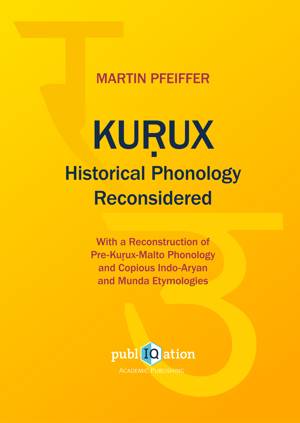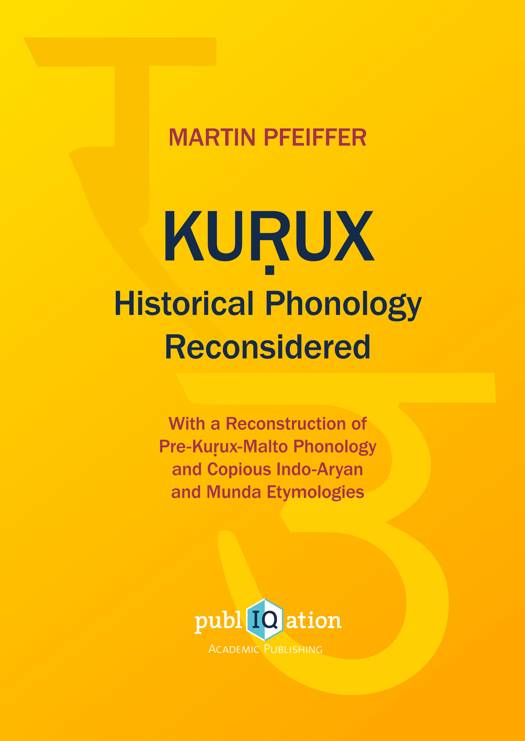
- Afhalen na 1 uur in een winkel met voorraad
- Gratis thuislevering in België vanaf € 30
- Ruim aanbod met 7 miljoen producten
- Afhalen na 1 uur in een winkel met voorraad
- Gratis thuislevering in België vanaf € 30
- Ruim aanbod met 7 miljoen producten
Zoeken
Kurux Historical Phonology Reconsidered E-BOOK
With a Reconstruction of Pre-Kurux-Malto Phonology
Martin Pfeiffer
E-book | Engels
€ 39,99
+ 39 punten
Omschrijving
Kurux (Oraon), with Malto and Brahui a member of the North Dravidian subfamily of the Dravidian languages, is spoken primarily in the Indian state of Jharkhand. The objective of the present study is to investigate the evolution of the Kurux phonemic system. This evolution can be described as a sequence of the Proto-Dravidian stage, the processes of sound change that
followed upon this stage, the Pre-Kurux-Malto stage, and the further processes of sound change which led to modern Kurux. Both stages and both sets of processes of sound change are reconstructed in detail, proceeding from the Kurux etyma included in the revised edition of the Dravidian Etymological Dictionary (1984), from which selections had to be made, however: Items of non-Dravidian (Indo-Aryan, Munda, Persian) origin as well as doubtful cases had to be identified and left out of account, so that the Proto-Dravidian reconstructions presented here are based on only 43 per cent of the Kurux etyma registered in the revised edition of the Dravidian Etymological Dictionary. Additional subjects dealt with include identification of the comparative evidence available for Proto-North-Dravidian, discussion of features that can serve as isoglosses for the North Dravidian subfamily, and considerations regarding the original home of the speakers of North Dravidian languages.
followed upon this stage, the Pre-Kurux-Malto stage, and the further processes of sound change which led to modern Kurux. Both stages and both sets of processes of sound change are reconstructed in detail, proceeding from the Kurux etyma included in the revised edition of the Dravidian Etymological Dictionary (1984), from which selections had to be made, however: Items of non-Dravidian (Indo-Aryan, Munda, Persian) origin as well as doubtful cases had to be identified and left out of account, so that the Proto-Dravidian reconstructions presented here are based on only 43 per cent of the Kurux etyma registered in the revised edition of the Dravidian Etymological Dictionary. Additional subjects dealt with include identification of the comparative evidence available for Proto-North-Dravidian, discussion of features that can serve as isoglosses for the North Dravidian subfamily, and considerations regarding the original home of the speakers of North Dravidian languages.
Specificaties
Betrokkenen
- Auteur(s):
- Uitgeverij:
Inhoud
- Aantal bladzijden:
- 480
- Taal:
- Engels
Eigenschappen
- Productcode (EAN):
- 9783745869873
- Verschijningsdatum:
- 2/08/2018
- Uitvoering:
- E-book
- Beveiligd met:
- Digital watermarking
- Formaat:

Alleen bij Standaard Boekhandel
+ 39 punten op je klantenkaart van Standaard Boekhandel
Beoordelingen
We publiceren alleen reviews die voldoen aan de voorwaarden voor reviews. Bekijk onze voorwaarden voor reviews.








